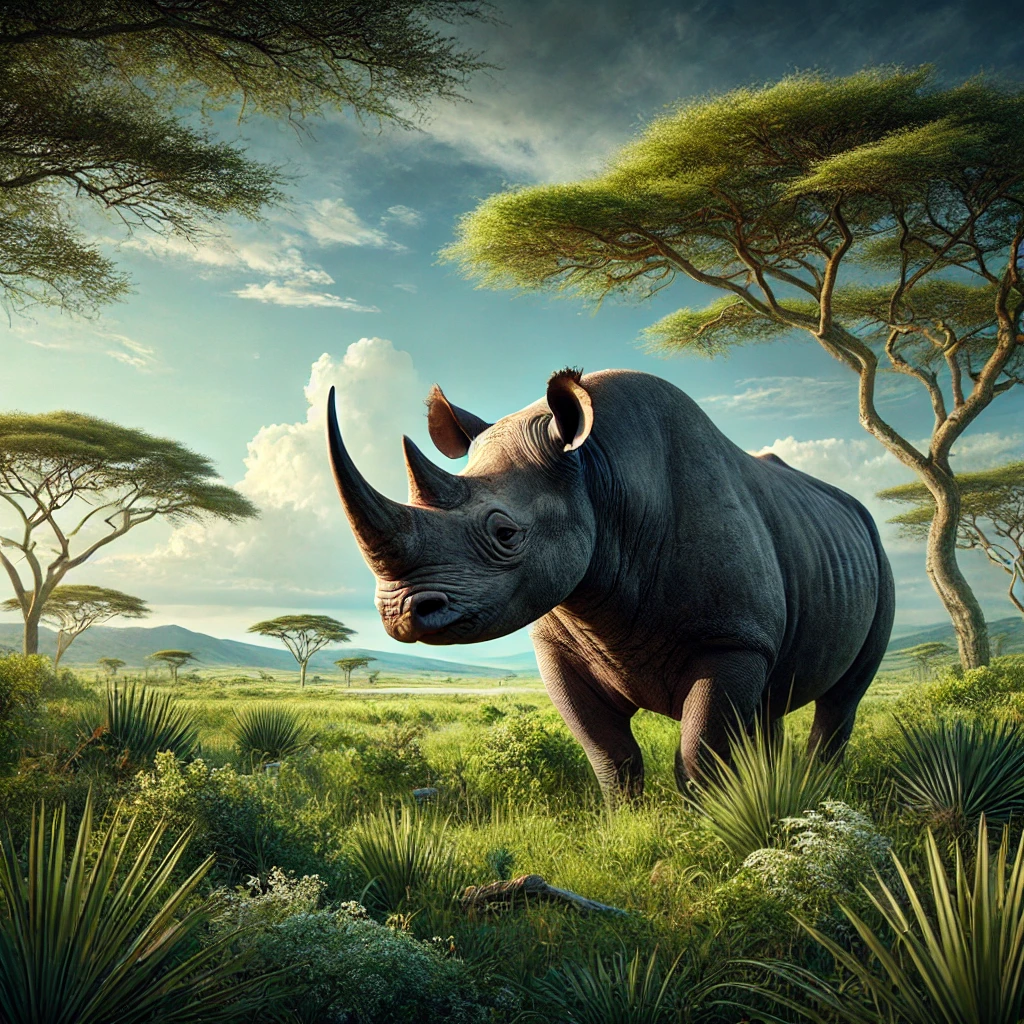The black rhinoceros (Diceros bicornis) is one of the world’s most iconic yet critically endangered species. Once widely distributed across sub-Saharan Africa, black rhino populations have drastically declined due to poaching, habitat loss, and other human-induced factors. Despite these challenges, conservation efforts have made significant strides in recent years. This article delves into the current status of black rhinos, the threats they face, and the ongoing efforts to secure their future.
Table of Contents
ToggleUnderstanding the Black Rhino Species

Black rhinos are one of the two African rhino species, distinguished by their hooked upper lip, which they use to grasp and manipulate vegetation. Unlike the white rhinoceros, black rhinos are browsers, primarily feeding on shrubs, small trees, and herbs. Their preference for dense vegetation often makes them harder to spot in the wild, contributing to their mystique and allure.
Despite their massive size and tough exterior, black rhinos are surprisingly vulnerable to environmental changes and human activities. Their relatively solitary nature, long gestation periods, and slow population growth make them particularly susceptible to population declines.
Current Population Status: How Many Are Left?
The plight of the black rhino has been a concern for decades. By the 20th century, there were an estimated 65,000 black rhinos roaming the African continent. However, relentless poaching for their horns and habitat destruction led to a catastrophic decline in their numbers. By the early 1990s, the black rhino population had plummeted to less than 2,500 individuals.
Today, thanks to concerted conservation efforts, the black rhino population has shown some signs of recovery. According to the International Union for Conservation of Nature (IUCN), as of recent estimates, there are approximately 5,500 black rhinos left in the wild. While this number indicates progress, it also highlights the ongoing fragility of the species. The black rhino remains listed as “Critically Endangered” on the IUCN Red List, indicating that it faces an extremely high risk of extinction in the wild.
The Distribution of Black Rhino Populations
Black rhinos primarily inhabit countries in southern and eastern Africa, with significant populations found in South Africa, Namibia, Zimbabwe, and Kenya. These nations have become crucial strongholds for the species, providing protected areas and reserves where rhinos can live relatively undisturbed.
Namibia, in particular, is known for having the largest population of free-ranging black rhinos. The country’s efforts in creating vast protected areas and involving local communities in conservation initiatives have been instrumental in the rhino’s survival. Similarly, South Africa has made significant investments in anti-poaching measures and habitat restoration to support black rhino populations.
Challenges and Threats to the Black Rhino’s Survival
Despite the positive trends in black rhino populations, the species continues to face numerous threats. Some of the most pressing challenges include:
- Poaching: The illegal demand for rhino horns remains the most significant threat to black rhinos. In some cultures, particularly in parts of Asia, rhino horn is believed to have medicinal properties, though this claim is scientifically unfounded. The horn is also seen as a status symbol, further fueling its illicit trade. Poachers, equipped with sophisticated weapons and technology, often target rhinos even in protected areas.
- Habitat Loss: As human populations expand, natural habitats for black rhinos are being encroached upon. Agricultural expansion, urban development, and infrastructure projects lead to the fragmentation of rhino habitats, reducing the areas where these animals can safely roam and find food.
- Climate Change: Changes in climate patterns can impact the availability of water and vegetation, which are crucial for the black rhino’s survival. Prolonged droughts and changing vegetation patterns may force rhinos to move into less suitable areas, increasing their vulnerability to poaching and conflict with humans.
- Limited Genetic Diversity: With a population that once dwindled to critically low numbers, black rhinos face challenges related to genetic diversity. A limited gene pool can lead to inbreeding, reducing the species’ ability to adapt to changing environments and resist diseases.
Conservation Efforts: Protecting the Black Rhino
Efforts to conserve the black rhino have been multi-faceted, involving government agencies, non-governmental organizations, local communities, and international collaborations. Key conservation strategies include:
- Anti-Poaching Measures: Governments and conservation organizations have invested heavily in anti-poaching initiatives, including deploying armed guards, utilizing surveillance technologies, and implementing stricter legal penalties for poaching activities. In some reserves, rhinos are monitored around the clock to ensure their safety.
- Community Involvement: Engaging local communities in conservation efforts has proven effective. By providing economic incentives, such as ecotourism and employment opportunities, communities are encouraged to protect rhinos rather than engage in poaching activities.
- Habitat Restoration: Restoring and expanding rhino habitats is crucial for ensuring their long-term survival. Conservationists work to secure large tracts of land where rhinos can roam freely, access sufficient food sources, and maintain a healthy genetic pool through natural breeding.
- Translocation and Breeding Programs: To boost genetic diversity and establish new populations, conservationists sometimes translocate rhinos to different areas. Carefully managed breeding programs also play a role in increasing black rhino numbers.
- Awareness and Education: Raising awareness about the plight of black rhinos is vital in curbing demand for rhino horn. Through education campaigns, people are informed about the importance of rhinos in ecosystems and the consequences of poaching.
The Road Ahead: Can Black Rhinos Be Saved?
The current number of black rhinos, while still alarmingly low, offers a glimmer of hope. The gradual increase in their population over the past few decades demonstrates that conservation efforts can make a difference. However, the road to full recovery is long and fraught with challenges.
The survival of the black rhino hinges on sustained, collaborative conservation efforts. It requires a multi-pronged approach that addresses poaching, habitat conservation, community engagement, and global awareness. Every individual, from local communities in Africa to policymakers and the international public, has a role to play in ensuring that future generations can witness the majesty of black rhinos in the wild.
Conclusion
With around 5,500 black rhinos left in the wild, the species remains on the brink of extinction. However, the successes achieved so far highlight the power of conservation efforts and the resilience of nature when given a chance to recover. The black rhino’s story is a stark reminder of the impact human actions can have on wildlife, but it also serves as a beacon of hope that, with concerted effort, it is possible to protect and restore endangered species. Now more than ever, the call to safeguard the black rhino is urgent and requires global support.
For More Information:
Visit Official Black Rhino Conservation for the latest updates and how you can contribute to their protection.
Stay connected for the latest Wildlife Conservation and alerts at thedeadlines.net!




